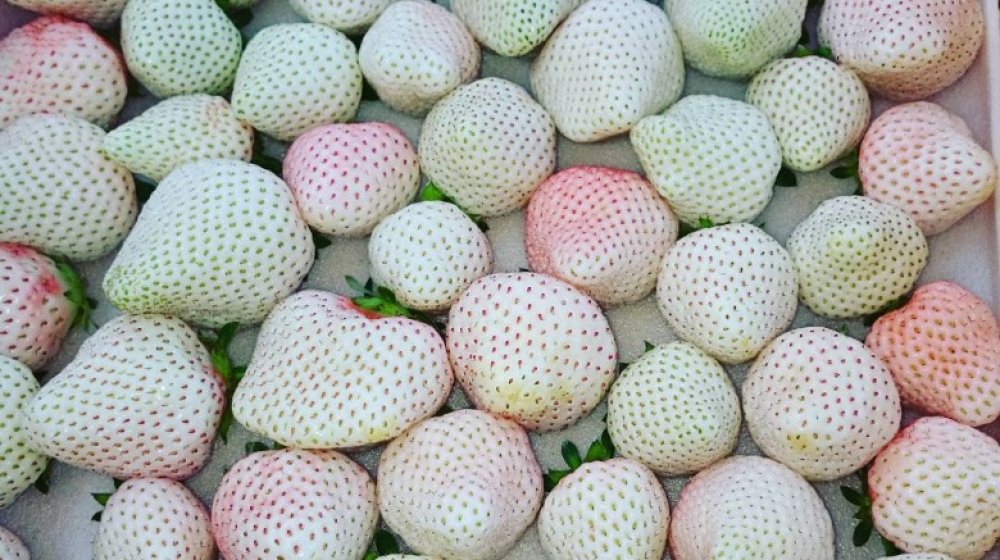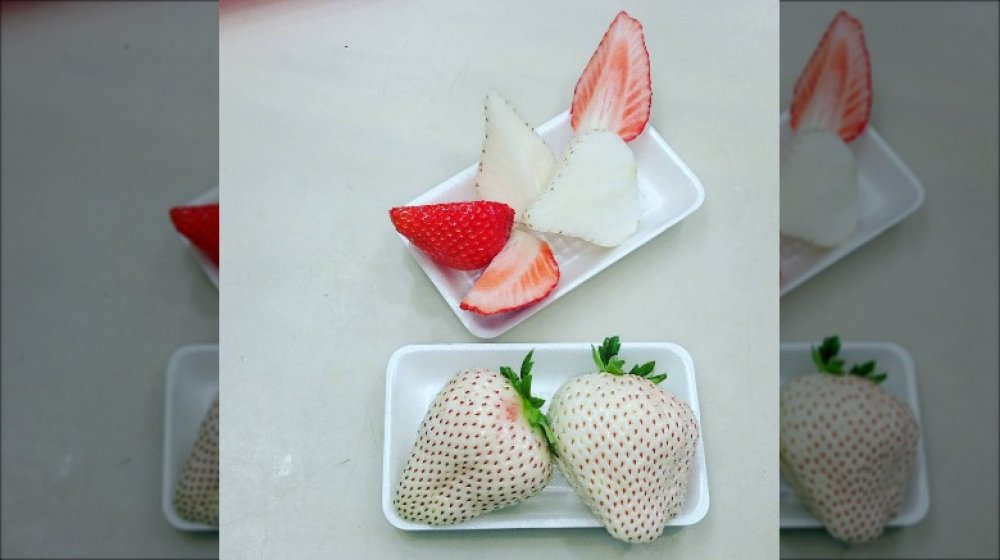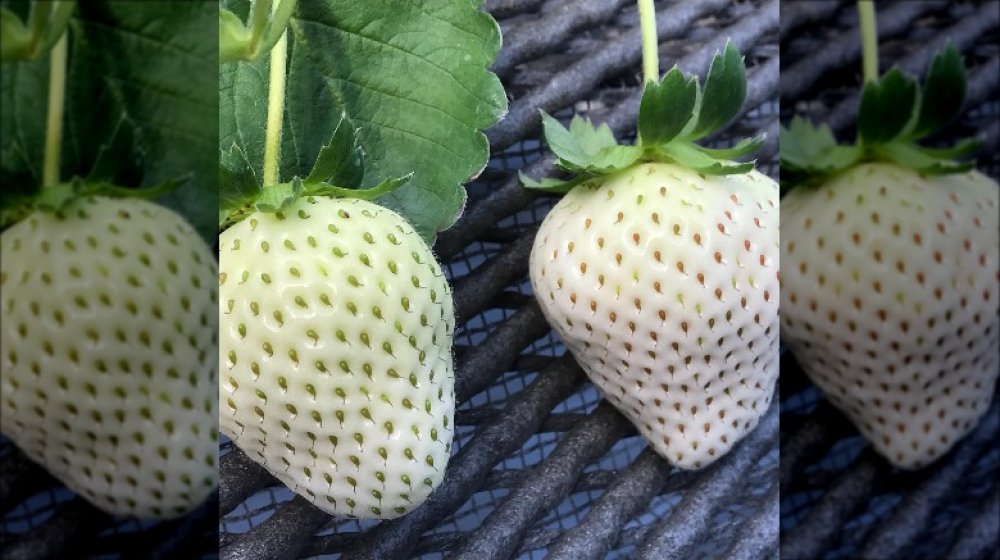The Real Reason White Strawberries Are So Expensive
Chomping down on sweet, juicy strawberries is one of those simple pleasures in life (though you might want to soak them in salt water first). June is peak strawberry season for most of the U.S., so summer is officially even better (via Epicurious). But there's a very special type of strawberry that you're unlikely to find anywhere in the country — the white strawberry.
If you've never tried or even heard of a white strawberry, you're not alone. White strawberries are strawberries with white flesh (hence the name), red seeds, and usually some pink patches. They are bred to be bigger, softer, and sweeter than the average strawberry (via Spoon University). This fruit shouldn't be confused with pineerries, which are a distinct variety of strawberry that is also white in color (via StrawberryPlants.org).
The white strawberry is mainly found in Japan, where it's a fixture within the luxury fruit market. There are several varieties of the special fruit in the Asian country, but the most popular type is the White Jewel, or Shiroi Houseki, which is the rarest and most expensive among them all.
The mastermind behind the White Jewel is Yasuhito Teshima, who said he spent years cross-breeding different kinds of strawberries and improving his growing technique — resulting in a sizable strawberry that's white on the inside and the outside (via Oddity Central).
Why white strawberries are so expensive
Teshima claims that though this particular type has some competition from the other varieties of white strawberries grown in Japan, it's really not much of a contest. The White Jewel is significantly larger and whiter than any other breed, he says. And his farm in the Saga Prefecture in Japan is apparently the only place in the world that produces the one-of-kind luxury strawberry.
The white color of the strawberry's flesh is achieved by cutting down sunlight exposure, which in turn reduces anthocyanin levels. This naturally-occurring pigment is what gives fruits and vegetables their hue. However, Teshima is still working on developing his technique. Even after his many years of conducting experiments on strawberries, only 10 percent of them turn out white, and only a few of these are completely pale. The rest have red or pink patches, or have a milky pink color. When a White Jewel is fully developed, it won't turn red, even under direct sunlight.
White Jewel strawberries have a heftier price tag on them when compared to conventional red strawberries because of a few different factors: the years spent breeding them, their low yield rate, the labor-intensive growing process, and space. Even though these strawberries are not gigantic, the farm needs to allot a lot of space for them to develop properly.
The price of white strawberries
The White Jewel is more pricey than a regular red strawberry. Just one (one!) costs $10! In contrast, a whole 16-ounce pack of organic red strawberries might cost around $6. A small pack of White Jewels is priced at $40, which would burn a hole in anyone's wallet.
What do white strawberries actually taste like? Teshima said the flavor is something deep that doesn't have a huge impact at first, but delivers a "slight mysterious feeling" that is "really, really tasty" once you understand it. Others have described white strawberries as sweet-smelling with soft skin. Once you bite into one, the taste is similar to fresh pineapple at first. This tropical flavor apparently goes away after a few seconds and then turns sweet like candy but not in an overpowering way. The strawberry's natural sugars don't linger in your mouth and instead leaves a fresh finish.
Because the flavor of the White Jewel is so unique and delicious, and the fruit is very expensive, these white strawberries are purchased to give as gifts for special occasions instead of everyday snacking. Surprisingly, this white strawberry is not the costliest type of strawberry. That title goes to the Kokota breed, a red strawberry that is priced at $22 for just a single berry.


